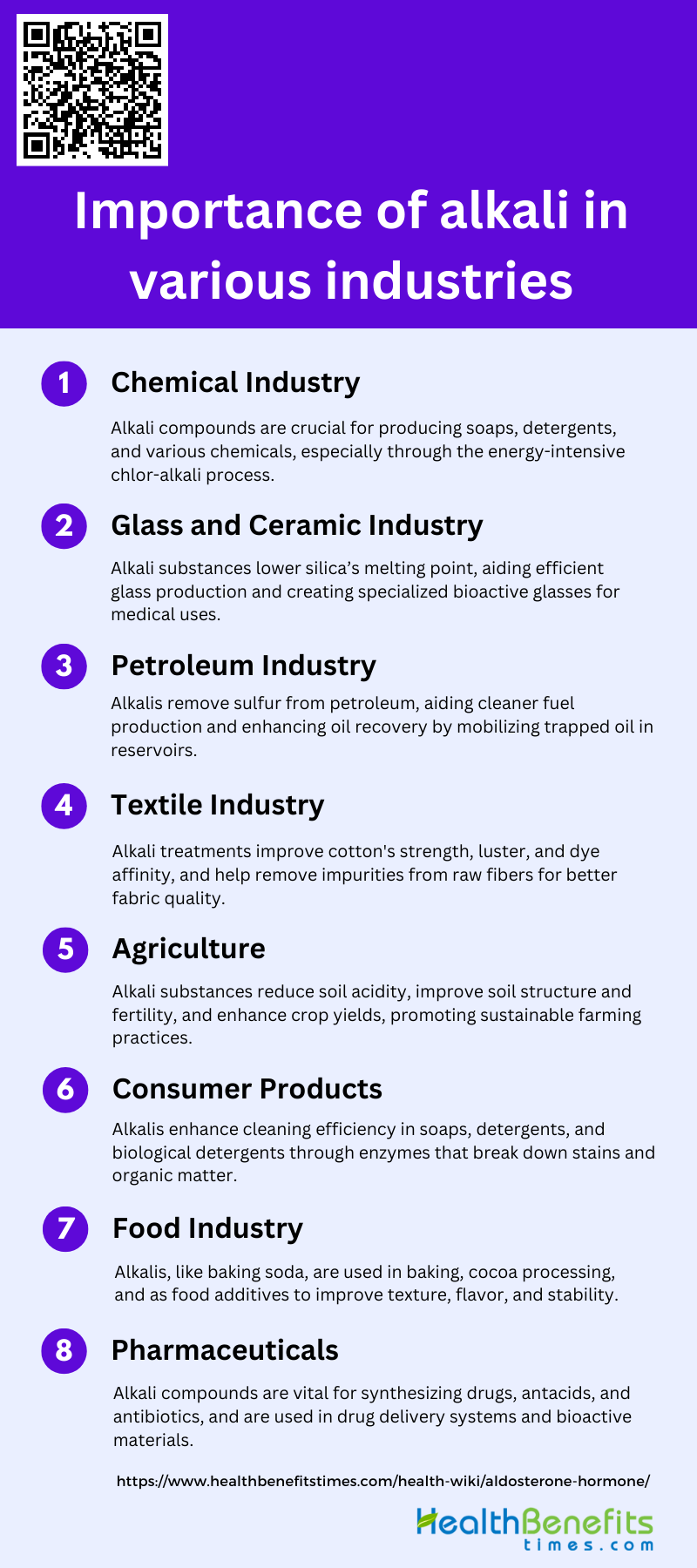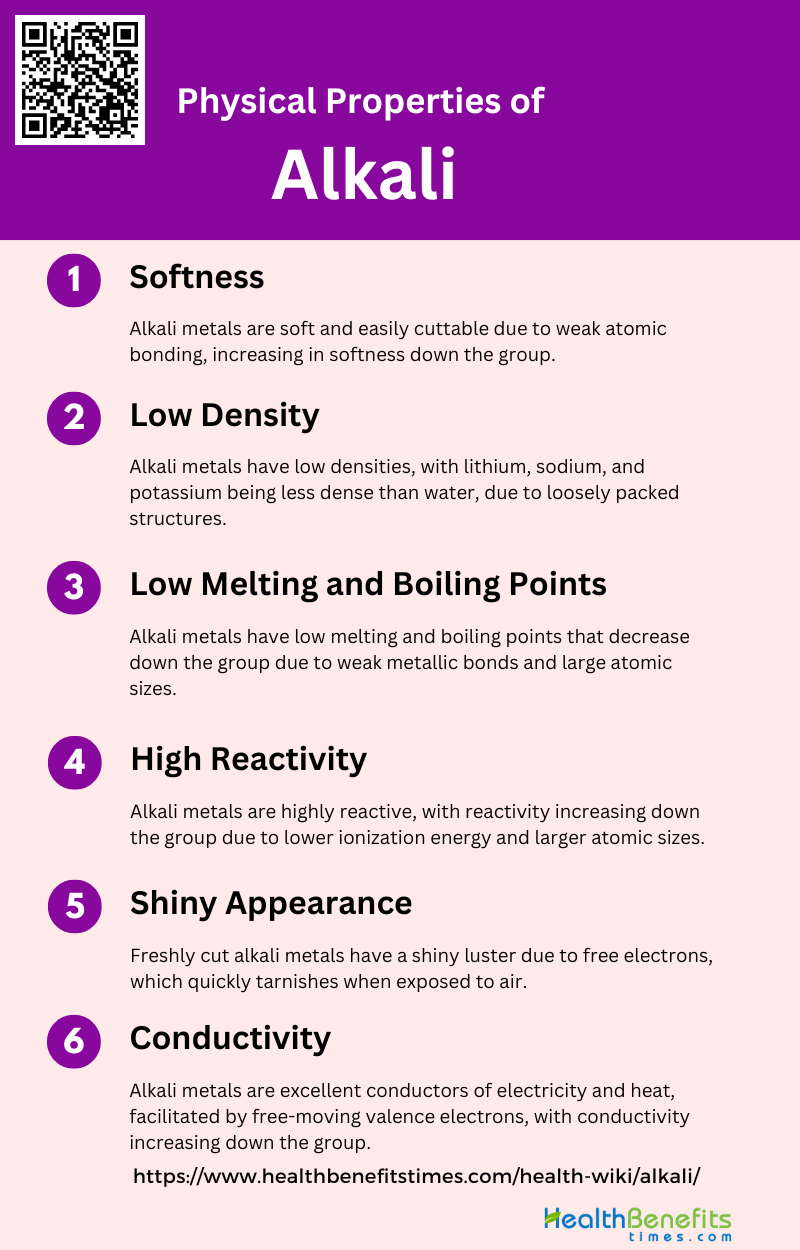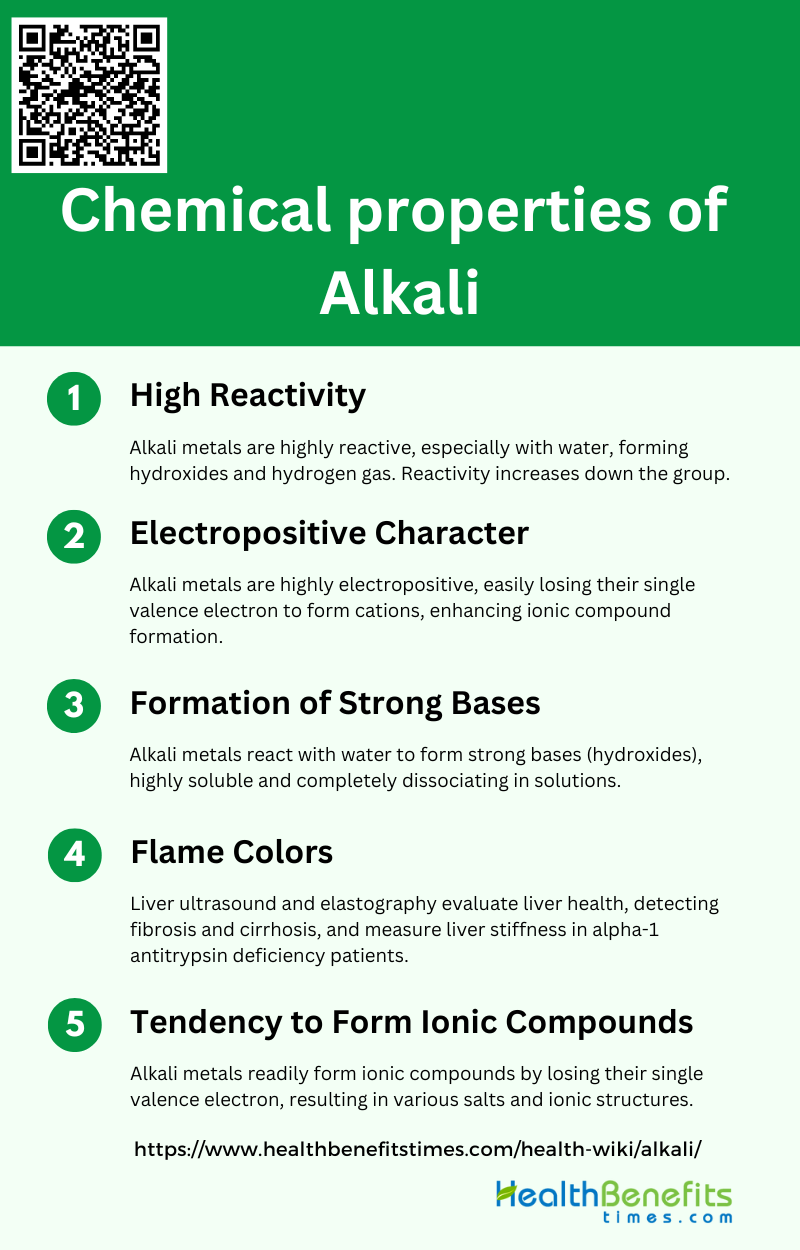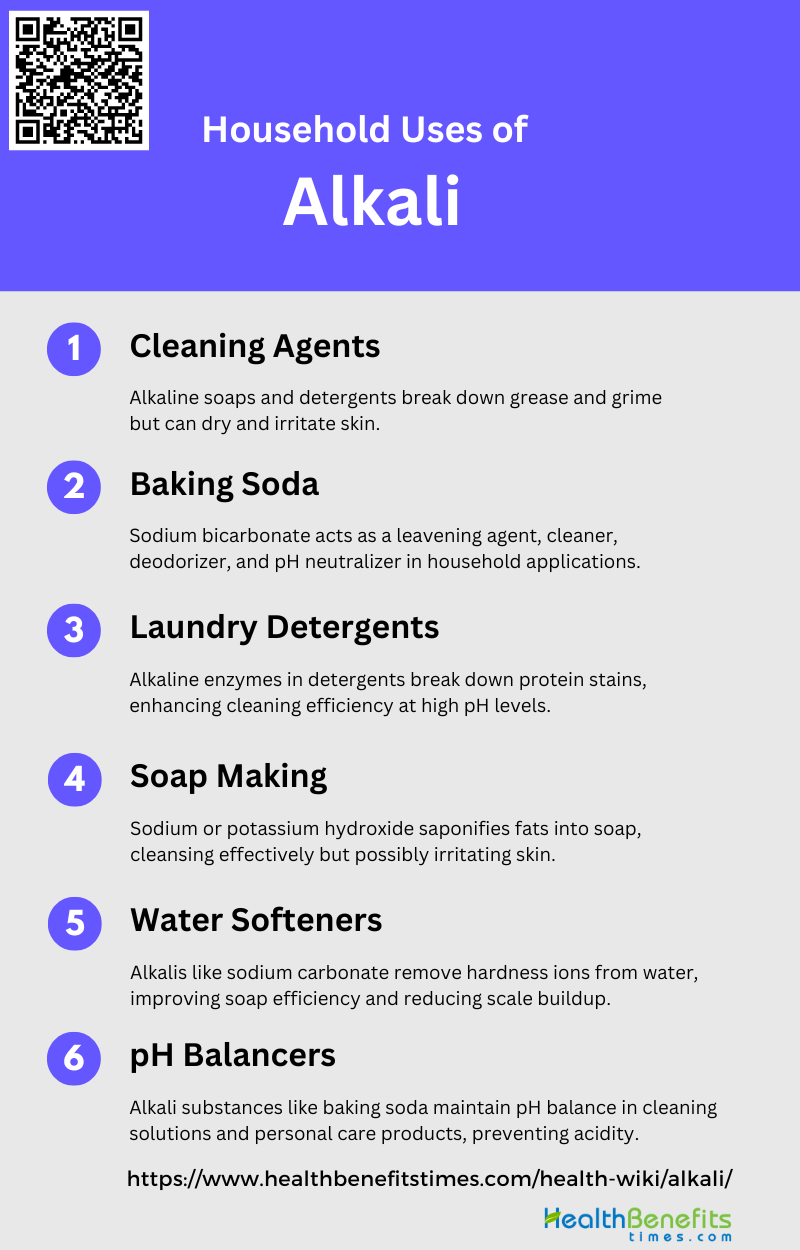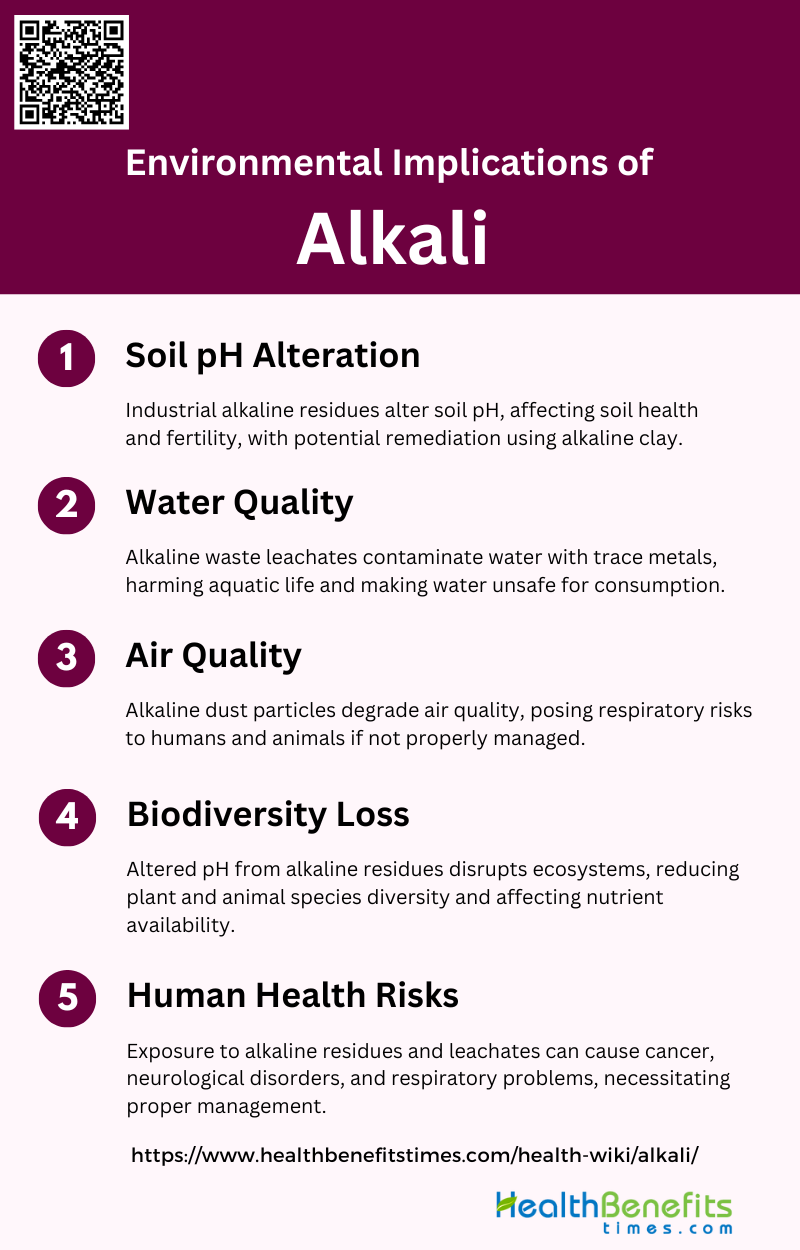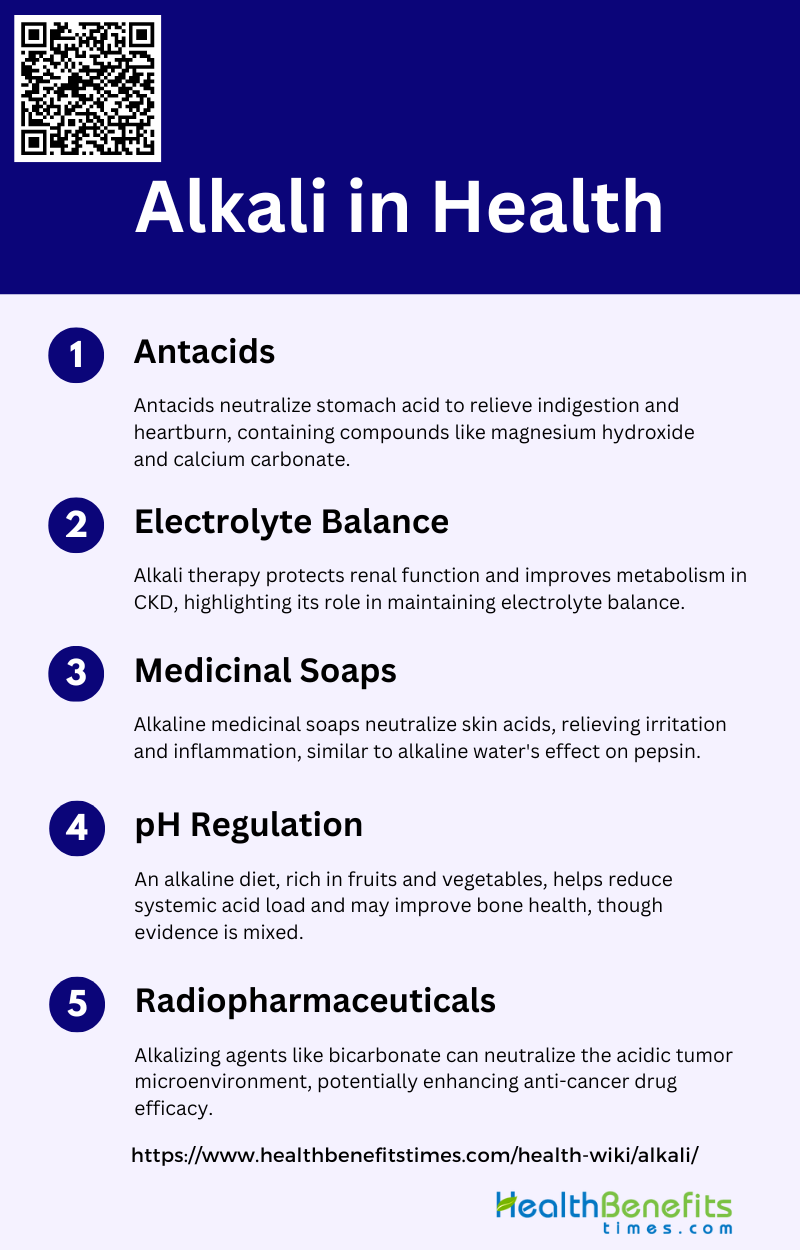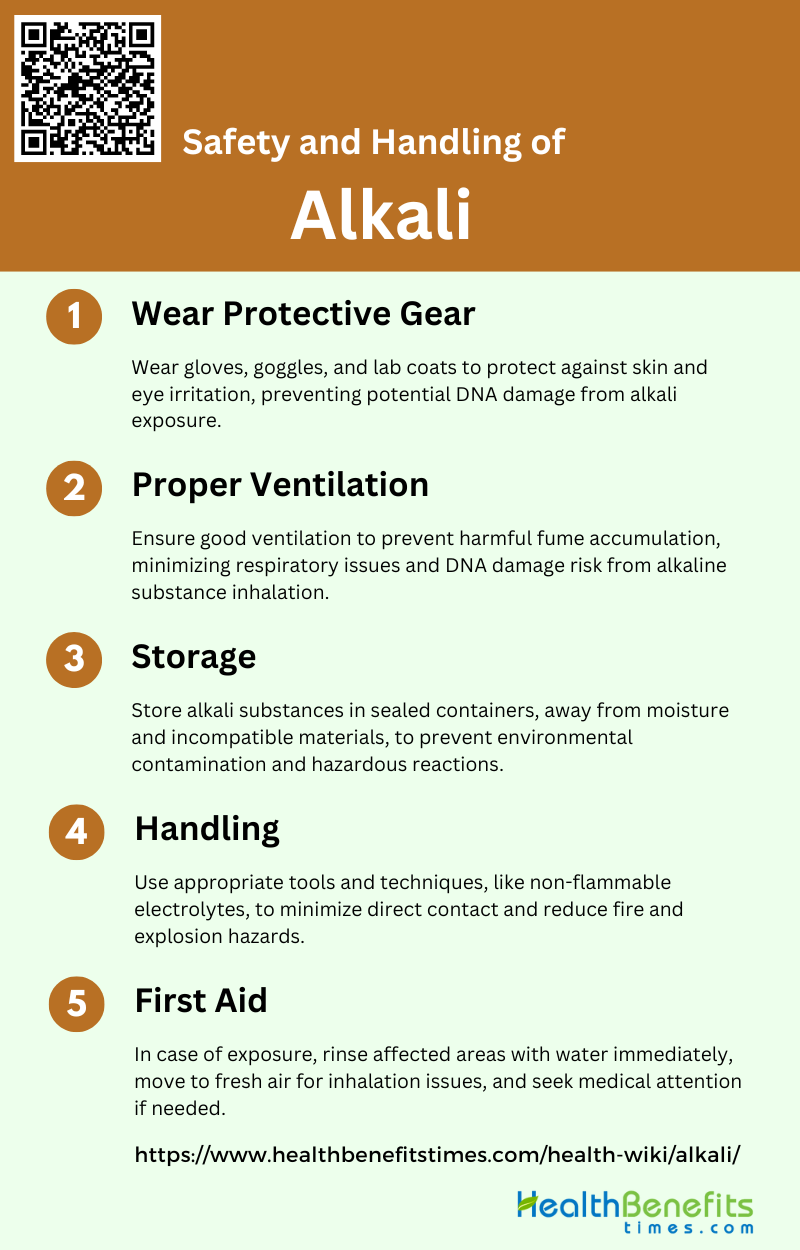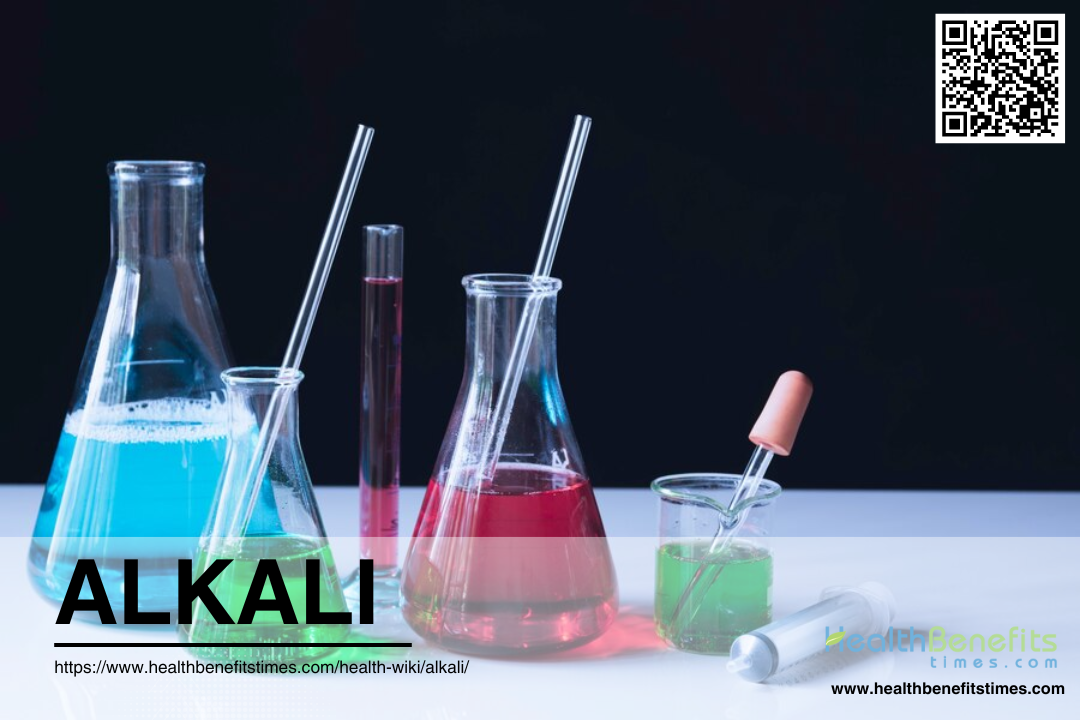 Alkali refers to a group of chemical compounds that are bases, which means they can neutralize acids. These compounds typically include the hydroxides of alkali metals such as sodium (NaOH) and potassium (KOH), as well as other related compounds. Alkalis are characterized by their ability to form hydroxide ions (OH-) when dissolved in water, resulting in a high pH solution. They are commonly used in various industrial processes, including soap making, water treatment, and as a chemical reactant in laboratories. Alkalis can also be found in natural settings, such as in certain types of soil and minerals, and they play a crucial role in maintaining the pH balance in various biological and environmental systems.
Alkali refers to a group of chemical compounds that are bases, which means they can neutralize acids. These compounds typically include the hydroxides of alkali metals such as sodium (NaOH) and potassium (KOH), as well as other related compounds. Alkalis are characterized by their ability to form hydroxide ions (OH-) when dissolved in water, resulting in a high pH solution. They are commonly used in various industrial processes, including soap making, water treatment, and as a chemical reactant in laboratories. Alkalis can also be found in natural settings, such as in certain types of soil and minerals, and they play a crucial role in maintaining the pH balance in various biological and environmental systems.
Importance of alkali in various industries
Alkali compounds play a crucial role in a wide range of industries due to their versatile chemical properties. They are essential in processes such as manufacturing, cleaning, and food production, contributing significantly to efficiency and product quality. Below are some key industries where alkali is indispensable:
1. Chemical Industry
They are used in the production of a wide range of chemicals, including soaps, detergents, and various organic and inorganic compounds. The chlor-alkali process, which produces chlorine and sodium hydroxide through the electrolysis of sodium chloride, is one of the largest electrochemical industries globally. This process is energy-intensive and is essential for manufacturing polyvinyl chloride and other chlorinated organic compounds, which are precursors for polymers like polyesters and urethanes.
2. Glass and Ceramic Industry
In the glass and ceramic industry, alkali compounds such as sodium carbonate (soda ash) and potassium carbonate are vital. These substances act as fluxes, lowering the melting point of silica, which is the primary component of glass. This facilitates the formation of glass at lower temperatures, making the process more energy-efficient. Additionally, alkali-free bioactive glasses have been developed for bone tissue engineering, demonstrating the versatility of alkali in creating specialized glass materials for medical applications.
3. Petroleum Industry
The petroleum industry utilizes alkali substances in various processes, including the refining of crude oil. Sodium hydroxide is used in the removal of sulfur compounds from petroleum products, a process known as sweetening. This helps in producing cleaner fuels and reducing environmental pollution. Alkali compounds are also employed in enhanced oil recovery techniques, where they help in mobilizing trapped oil in reservoirs, thereby increasing the efficiency of oil extraction.
4. Textile Industry
In the textile industry, alkali substances such as sodium hydroxide are used in the mercerization process, which improves the strength, luster, and dye affinity of cotton fibers. This process involves treating cotton with a strong alkali solution, which causes the fibers to swell and become more absorbent. Additionally, alkali substances are used in the scouring process to remove natural waxes and impurities from raw fibers, ensuring that the fabric is clean and ready for dyeing and finishing.
5. Agriculture
Alkali substances play a significant role in agriculture, particularly in soil treatment and pH regulation. Lime (calcium oxide) is commonly used to reduce soil acidity, improving soil structure and nutrient availability for plants. This practice enhances crop yields and promotes healthier plant growth. Additionally, alkali-treated residues can be used as soil amendments, providing essential nutrients and improving soil fertility. The use of alkali in agriculture helps in maintaining soil health and ensuring sustainable farming practices.
6. Consumer Products
Alkaline enzymes, such as alkaline cellulases and proteases, are incorporated into biological detergents to enhance their cleaning efficiency. These enzymes, produced by alkaliphilic microorganisms, help in breaking down stains and organic matter, making detergents more effective. The use of alkali in consumer products ensures better cleaning performance and contributes to the overall hygiene and cleanliness of households.
7. Food Industry
In the food industry, alkali substances are used in various processes, including the production of baked goods, chocolate, and beverages. Sodium bicarbonate (baking soda) is a common leavening agent used in baking to produce carbon dioxide gas, which helps dough rise. Alkali substances are also used in the processing of cocoa to produce Dutch-processed chocolate, which has a milder flavor and darker color. Additionally, alkali-treated cyclodextrins are used as food additives to improve the texture and stability of food products.
8. Pharmaceuticals
They are used in the production of antibiotics, antacids, and other medications. Alkaline conditions are often required for specific chemical reactions involved in drug synthesis. Additionally, alkali-treated materials are used in drug delivery systems, such as bioactive glasses for bone regeneration and alkaline lipases for pharmaceutical applications. The use of alkali in pharmaceuticals ensures the production of effective and high-quality medications.
Physical Properties of Alkali
Alkali metals are known for their distinctive physical properties, which include being highly reactive and having low melting points. These metals are typically soft and can be cut with a knife. Additionally, they exhibit excellent conductivity for heat and electricity.
1. Softness
Alkali metals are known for their remarkable softness, which allows them to be easily cut with a knife. This property is attributed to their atomic structure, where each atom has a single valence electron that is loosely bound to the nucleus. This weak bonding results in a metallic lattice that is not tightly packed, making the metals soft and malleable. For instance, sodium and potassium are so soft that they can be sliced with minimal effort. The softness of these metals increases as you move down the group in the periodic table, from lithium to cesium, due to the increasing atomic size and decreasing ionization energy.
2. Low Density
Alkali metals exhibit low densities compared to other metals, which is a direct consequence of their large atomic radii and relatively low atomic masses. This characteristic is particularly evident in lithium, sodium, and potassium, which are less dense than water and can float on its surface. The low density of these metals is due to the loosely packed crystal lattice structure, which results in a lower mass per unit volume. As you move down the group, the density generally increases, but it remains lower than that of most other metals.
3. Low Melting and Boiling Points
Alkali metals have notably low melting and boiling points, which decrease as you move down the group from lithium to cesium. This trend is due to the weakening of metallic bonds as the atomic size increases, making it easier for the atoms to move apart and transition into liquid and gaseous states. For example, the melting point of cesium is just 28.5°C, which is significantly lower than that of lithium at 180.5°C. These low melting and boiling points are a result of the single valence electron being weakly bound, leading to less energy required to break the metallic bonds.
4. High Reactivity
The high reactivity of alkali metals is one of their most defining characteristics. This reactivity increases down the group, from lithium to francium, due to the decreasing ionization energy and increasing atomic size, which makes it easier for these metals to lose their single valence electron. Alkali metals react vigorously with water, producing hydrogen gas and a corresponding hydroxide, and can even ignite spontaneously in air. For instance, potassium reacts more violently with water than sodium, and cesium reacts even more explosively. This high reactivity is also evident in their interactions with other substances, such as halogens, to form ionic compounds.
5. Shiny Appearance
Alkali metals possess a shiny, metallic luster when freshly cut, which is due to the free electrons in their structure that can reflect light. This shiny appearance, however, is short-lived as these metals quickly tarnish when exposed to air, forming an oxide layer that dulls their surface. The luster is a result of the delocalized electrons in the metallic bond, which can move freely and reflect photons, giving the metals their characteristic shine. Despite their rapid oxidation, the initial shiny appearance is a notable feature of alkali metals like sodium and potassium.
6. Conductivity
Alkali metals are excellent conductors of electricity and heat, a property that stems from their single valence electron, which is free to move throughout the metallic lattice. This free electron acts as a charge carrier, facilitating the flow of electric current and thermal energy. The electrical conductivity of these metals is relatively high and increases down the group due to the increasing atomic size and decreasing ionization energy, which allows the valence electron to move more freely. For example, cesium has a higher electrical conductivity than lithium, making it more efficient in conducting electricity.
Chemical properties of Alkali
Alkali metals are known for their high reactivity, especially with water, forming hydroxides and releasing hydrogen gas. They exhibit strong basic properties and are highly electropositive, making them excellent conductors of electricity. Here are some key chemical properties of alkali metals:
1. High Reactivity
This characteristic is evident in their interactions with various substances, including water, where they react vigorously to produce hydrogen gas and hydroxides. For instance, organolithium compounds, which are a type of organoalkali metal, exhibit significant reactivity and are widely used in organic synthesis due to their ability to form strong bases and nucleophiles. The reactivity of alkali metals increases as we move down the group in the periodic table, with heavier alkali metals like potassium and cesium being more reactive than lithium and sodium.
2. Electropositive Character
This electropositive nature is a key factor in their chemical behavior, influencing their ability to form ionic compounds. The electropositivity of alkali metals increases down the group, which is reflected in the structural and electronic properties of their compounds. For example, in alkali metal azides, the electropositive character of the metals contributes to the ionic nature of these compounds, as evidenced by the charge transfer and bond order analyses. This property also plays a crucial role in the formation of various organometallic compounds, where the alkali metal acts as a strong electron donor.
3. Formation of Strong Bases
Alkali metals readily form strong bases when they react with water, producing hydroxides that are highly soluble and dissociate completely in solution. This property is utilized in various industrial and chemical processes. For instance, alkali-activated materials (AAMs) are produced through the dissolution and polycondensation of precursors in high pH solutions, which are often created using alkali metal hydroxides. The strong basicity of these hydroxides is a critical factor in the reactivity and formation of geopolymerization products in AAMs, highlighting the importance of alkali metals in creating highly reactive and stable materials.
4. Flame Colors
One of the distinctive properties of alkali metals is the characteristic colors they produce when burned in a flame. This phenomenon is due to the excitation of electrons in the metal atoms, which emit light at specific wavelengths as they return to their ground state. Each alkali metal produces a unique flame color: lithium yields a crimson flame, sodium a bright yellow, potassium a lilac, rubidium a red-violet, and cesium a blue-violet. These flame colors are not only visually striking but also serve as a practical tool for identifying alkali metals in qualitative analysis. The emission spectra of these metals are well-documented and are used in various analytical techniques to detect and quantify the presence of alkali metals in samples.
5. Tendency to Form Ionic Compounds
Alkali metals have a strong tendency to form ionic compounds due to their ability to easily lose their single valence electron and form positively charged ions. This property is evident in the formation of various salts and other ionic compounds. For example, the structural chemistry of alkali metal thallides demonstrates the formation of unique crystal structures where the alkali metals act as electropositive counterparts to the electronegative thallium. The ionic nature of these compounds is further supported by their electronic structure and charge transfer characteristics, which highlight the strong electrostatic interactions between the alkali metal cations and their corresponding anions. This tendency to form ionic compounds is a fundamental aspect of the chemical behavior of alkali metals, influencing their reactivity and applications in various fields.
Common examples of Alkali
The term “alkali” refers to a group of chemical compounds that are bases, typically soluble in water, and can neutralize acids. Common examples of alkali compounds include:
1. Sodium Hydroxide
Sodium hydroxide (NaOH), commonly known as lye or caustic soda, is a highly versatile and widely used alkali. It is a white, solid ionic compound that is highly soluble in water, producing a strong exothermic reaction. Sodium hydroxide is extensively utilized in various industries, including the manufacture of paper, textiles, and detergents. It is also a key component in the production of biodiesel and is used in the food industry for processes like peeling fruits and vegetables. Additionally, NaOH is employed in water treatment and as a drain cleaner due to its ability to dissolve organic matter.
2. Potassium Hydroxide
Potassium hydroxide (KOH), also known as caustic potash, is another important alkali with a wide range of applications. It is a white, deliquescent solid that readily absorbs moisture from the air and dissolves in water to form a strongly alkaline solution. KOH is used in the production of soft soaps and as an electrolyte in alkaline batteries. It also plays a crucial role in the manufacture of biodiesel and as a precursor for various potassium compounds. In agriculture, potassium hydroxide is used to neutralize acidic soils and as a fertilizer component.
3. Lithium Hydroxide
Lithium hydroxide (LiOH) is a white hygroscopic crystalline material that is highly soluble in water. It is primarily used in the production of lithium-ion batteries, which are essential for portable electronics and electric vehicles. LiOH is also employed in the manufacture of ceramics and glass, where it acts as a flux to lower melting points. Additionally, it is used in air purification systems, particularly in submarines and spacecraft, to remove carbon dioxide from the air. The compound’s neuroprotective properties are being explored for potential medical applications.
4. Calcium Hydroxide
Calcium hydroxide (Ca(OH)2), commonly known as slaked lime or hydrated lime, is a white powder produced by mixing calcium oxide (quicklime) with water. It is widely used in the construction industry for making mortar and plaster. In agriculture, it is used to neutralize acidic soils and improve soil quality. Calcium hydroxide is also employed in water treatment processes to soften water and remove impurities. Additionally, it is used in the food industry for processing corn in the production of tortillas and other products.
5. Ammonium Hydroxide
Ammonium hydroxide (NH4OH), often referred to as ammonia water, is a solution of ammonia gas in water. It is a colorless liquid with a strong, pungent odor. Ammonium hydroxide is widely used as a cleaning agent and sanitizer in both household and industrial settings. It is also employed in the production of fertilizers, plastics, and explosives. In the food industry, it is used as a leavening agent and to control acidity. Additionally, ammonium hydroxide is used in the textile industry for dyeing and treating fabrics.
Household uses of Alkali
Alkalis are versatile compounds found in many household products, providing numerous benefits in daily life. They are commonly used for cleaning, cooking, and personal care, making them essential in maintaining a clean and healthy home environment. Here are some common household uses of alkali:
1. Cleaning Agents
They are widely used in household cleaning agents due to their ability to break down organic materials such as grease and grime. Alkaline soaps and detergents, for instance, are effective in removing dirt and oils from surfaces. However, their use can alter the skin’s pH and fat content, potentially leading to dryness and irritation. The inclusion of alkaline enzymes, such as those derived from alkaliphiles, enhances the cleaning power of these agents, making them more efficient in breaking down stubborn stains and residues.
2. Baking Soda
Baking soda, or sodium bicarbonate, is a versatile alkali used in various household applications. In baking, it acts as a leavening agent, helping dough rise by producing carbon dioxide when it reacts with acidic components. Beyond baking, it serves as a mild abrasive for cleaning, a deodorizer, and a pH neutralizer. Its alkaline nature makes it effective in neutralizing acids and maintaining a balanced pH in various solutions, contributing to its widespread use in household maintenance and personal care.
3. Laundry Detergents
Enzymes produced by alkaliphiles, such as alkaline cellulases and proteases, are commonly used in these detergents to break down protein-based stains and enhance cleaning efficiency. These enzymes are particularly effective at high pH levels, making them ideal for use in alkaline detergents. The widespread use of these enzymes has significantly impacted the global enzyme market, with a substantial portion dedicated to laundry detergents.
4. Soap Making
The process of soap making involves the saponification of fats and oils with an alkali, typically sodium hydroxide or potassium hydroxide. This reaction produces soap and glycerin, with the alkali playing a critical role in breaking down the fats into fatty acid salts. Alkaline soaps are effective in cleansing but can increase skin pH and reduce fat content, potentially leading to dryness and irritation. Despite this, their ability to emulsify oils and remove dirt makes them a staple in household cleaning and personal hygiene.
5. Water Softeners
Sodium carbonate (soda ash) and sodium hydroxide are commonly used alkalis in water softening processes. These substances precipitate the hardness ions, allowing them to be filtered out, resulting in softer water. Softened water enhances the effectiveness of soaps and detergents, reduces scale buildup in pipes and appliances, and improves the overall efficiency of household cleaning tasks.
6. pH Balancers
This substances are essential in maintaining and adjusting the pH levels of various household solutions. For instance, baking soda is often used to neutralize acidic odors and maintain a balanced pH in cleaning solutions. In personal care, alkaline products can help balance the skin’s pH, although excessive use may disrupt the natural acid mantle, leading to dryness and irritation. The ability of alkali substances to neutralize acids and maintain pH balance makes them valuable in a wide range of household applications.
Environmental implications of Alkali
The use of alkali substances in various industries has significant environmental implications. These chemicals can lead to soil and water contamination, affecting ecosystems and human health. Understanding these impacts is crucial for developing sustainable practices and mitigating negative effects.
1. Soil pH Alteration
Alkaline residues from industrial processes such as steel production and alumina refining can significantly alter soil pH when they leach into the environment. These residues often contain high levels of trace metals that form oxyanions, which are highly mobile in alkaline conditions. This can lead to increased soil alkalinity, disrupting the natural pH balance and affecting soil health and fertility. Additionally, the use of alkaline clay in remediation efforts has shown potential in maintaining neutral pH conditions, thereby stabilizing soil environments.
2. Water Quality
The infiltration of rainwater into alkaline waste piles can produce leachates enriched with trace metals like arsenic, chromium, and vanadium, which can contaminate surface and groundwater. These contaminants pose significant risks to water quality, making it unsafe for consumption and harmful to aquatic life. Elevated concentrations of aluminum, mobilized under alkaline conditions, can further exacerbate water quality issues by altering the cycling and availability of essential elements and increasing the toxicity to aquatic organisms.
3. Air Quality
Dust particles from these residues can carry harmful trace metals and other pollutants, which can be inhaled by humans and animals, causing respiratory issues and other health problems. Effective management practices, such as covering waste piles and using dust suppression techniques, are essential to mitigate these air quality impacts.
4. Biodiversity Loss
The alteration of soil and water pH due to alkaline residues can lead to significant biodiversity loss. Changes in pH can affect the availability of nutrients and the toxicity of metals, making the environment inhospitable for many plant and animal species. This can result in reduced species diversity and the disruption of ecosystems. Additionally, the long-term stability of remediation efforts using alkaline clay can help mitigate these impacts by maintaining more neutral pH conditions and reducing contaminant levels.
5. Human Health Risks
Exposure to alkaline residues and their leachates poses several human health risks. Contaminated water sources can lead to the ingestion of harmful trace metals, which can cause various health issues, including cancer and neurological disorders. Inhalation of dust particles from alkaline residues can lead to respiratory problems and other health complications. Therefore, proper management and remediation of alkaline residues are crucial to protect human health and ensure safe living environments.
Alkali in Health
These compounds help neutralize excess acidity, supporting optimal cellular function and metabolic processes. Incorporating alkali-rich foods and supplements can promote better digestion, bone health, and energy levels.
1. Antacids
Antacids are alkaline substances used to neutralize stomach acid and relieve symptoms of indigestion and heartburn. They typically contain compounds such as magnesium hydroxide, calcium carbonate, and sodium bicarbonate, which react with hydrochloric acid in the stomach to form water and salts, thereby reducing acidity. Historically, the “milk alkali syndrome” was a condition resulting from excessive consumption of calcium-containing antacids and milk, leading to hypercalcemia and renal impairment. Modern antacids are formulated to minimize such risks while effectively managing acid-related disorders.
2. Electrolyte Balance
Maintaining electrolyte balance is crucial for physiological functions, and alkali can play a significant role in this. For instance, alkali therapy has been shown to protect renal function and improve cellular metabolism in chronic kidney disease (CKD) by counteracting metabolic acidosis, a common issue in CKD patients. Additionally, an alkaline diet can help regulate serum electrolytes and prevent disorders such as diabetic ketoacidosis, as demonstrated in experimental studies on rats. These findings highlight the importance of alkali in managing electrolyte imbalances and associated health conditions.
3. Medicinal Soaps
Medicinal soaps often contain alkaline substances that can help in maintaining skin health and treating various dermatological conditions. The alkaline nature of these soaps can neutralize acids on the skin, providing relief from irritation and inflammation. While specific studies on medicinal soaps were not provided, the general principle of using alkali to neutralize acids and maintain pH balance is well-documented in other health applications, such as the use of alkaline water to deactivate pepsin in laryngopharyngeal reflux.
4. pH Regulation
Regulating the body’s pH is essential for overall health, and an alkaline diet is often promoted for this purpose. Alkaline diets, rich in fruits and vegetables, can help reduce systemic acid load and improve bone health by decreasing bone resorption markers like PTH and S-CTX. However, systematic reviews have shown mixed results regarding the direct benefits of alkaline diets on osteoporosis, indicating that more research is needed to establish a clear causal relationship. Nonetheless, maintaining an optimal pH balance through diet and other means remains a key aspect of health management.
5. Radiopharmaceuticals
Alkali can also play a role in the field of radiopharmaceuticals, particularly in the context of cancer treatment. The acidic tumor microenvironment, a result of cancer metabolism, can be neutralized using alkalizing agents like bicarbonate, potentially improving the efficacy of anti-cancer drugs and inhibiting cancer progression. This approach leverages the alkalizing effect to create a less favorable environment for cancer cells, thereby enhancing treatment outcomes. While clinical evidence is still emerging, the potential benefits of alkali in radiopharmaceutical applications are promising.
Safety and Handling of Alkali
Handling alkali substances requires strict safety measures to prevent accidents and injuries. It is essential to wear appropriate personal protective equipment (PPE) and follow proper storage guidelines. Below are key safety practices to observe when working with alkali:
1. Wear Protective Gear
When handling alkali substances, it is crucial to wear appropriate protective gear to minimize exposure and prevent injuries. Protective equipment such as gloves, goggles, and lab coats should be worn to protect the skin and eyes from potential irritation and burns. Studies have shown that exposure to alkaline substances can cause mild skin irritation and eye conjunctival reddening, emphasizing the need for protective measures. Additionally, using more than one type of protective equipment can significantly reduce the risk of DNA damage in individuals handling hazardous materials. Therefore, comprehensive protective gear is essential for safe handling of alkali substances.
2. Proper Ventilation
Proper ventilation is essential when working with alkali substances to prevent the accumulation of harmful fumes and ensure a safe working environment. Inadequate ventilation can lead to the inhalation of toxic substances, which can cause respiratory issues and other health problems. Research indicates that inhalation of alkaline substances, such as glycine buffer, can be tolerated without adverse effects on lung function when proper safety measures are in place. Moreover, working in a well-ventilated area can significantly reduce the risk of DNA damage in individuals exposed to hazardous chemicals. Therefore, ensuring proper ventilation is a critical aspect of handling alkali substances safely.
3. Storage
Proper storage of alkali substances is crucial to prevent accidental exposure and environmental contamination. Alkali residues, if not stored correctly, can generate dust or leachates that pose environmental hazards. It is important to store these substances in sealed containers, away from moisture and incompatible materials, to prevent reactions that could lead to hazardous conditions. For instance, alkali metals absorbed into silica gel can be handled safely in ambient air but require careful storage to avoid degradation by atmospheric moisture. Therefore, implementing proper storage practices is essential to ensure the safety and stability of alkali substances.
4. Handling
Handling alkali substances requires careful attention to detail and adherence to safety protocols to prevent accidents and injuries. Using appropriate tools and techniques can minimize direct contact and reduce the risk of exposure. For example, the use of non-flammable liquid and quasi-solid electrolytes in alkali metal-based batteries can mitigate the risks associated with traditional liquid electrolytes, such as fire and explosion hazards. Additionally, the development of one-part alkali-activated materials, which are easier to handle than conventional two-part systems, can further enhance safety during handling. Therefore, adopting safe handling practices is essential to mitigate the risks associated with alkali substances.
5. First Aid
In the event of accidental exposure to alkali substances, prompt and appropriate first aid measures are crucial to minimize harm. Immediate actions such as rinsing the affected area with water can help reduce the severity of skin and eye irritation. For inhalation exposure, moving the affected individual to fresh air and seeking medical attention if symptoms persist is recommended. It is also important to have safety data sheets and emergency contact information readily available in case of severe exposure. By being prepared and knowledgeable about first aid procedures, the impact of accidental exposure to alkali substances can be effectively managed.


